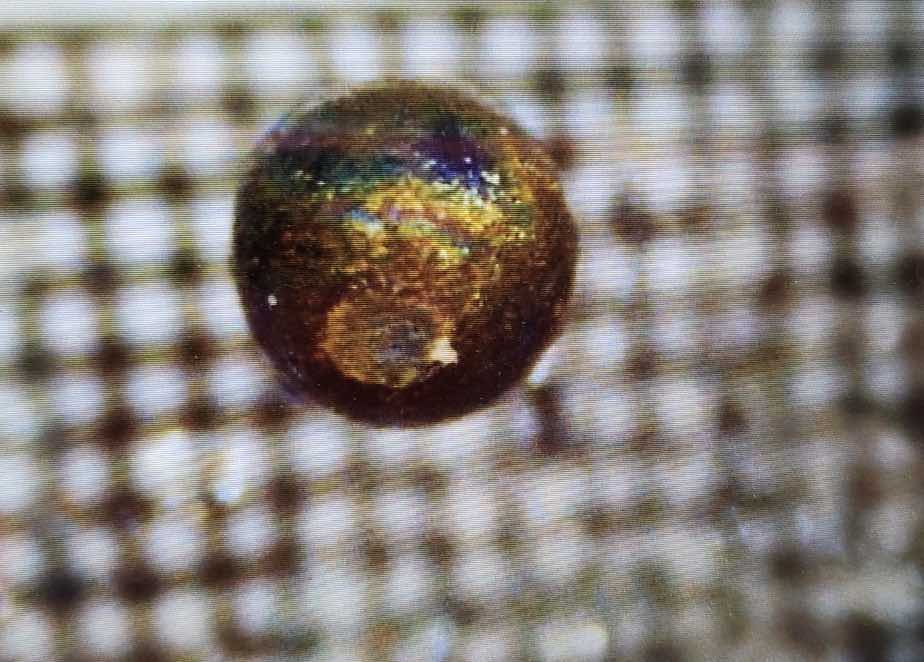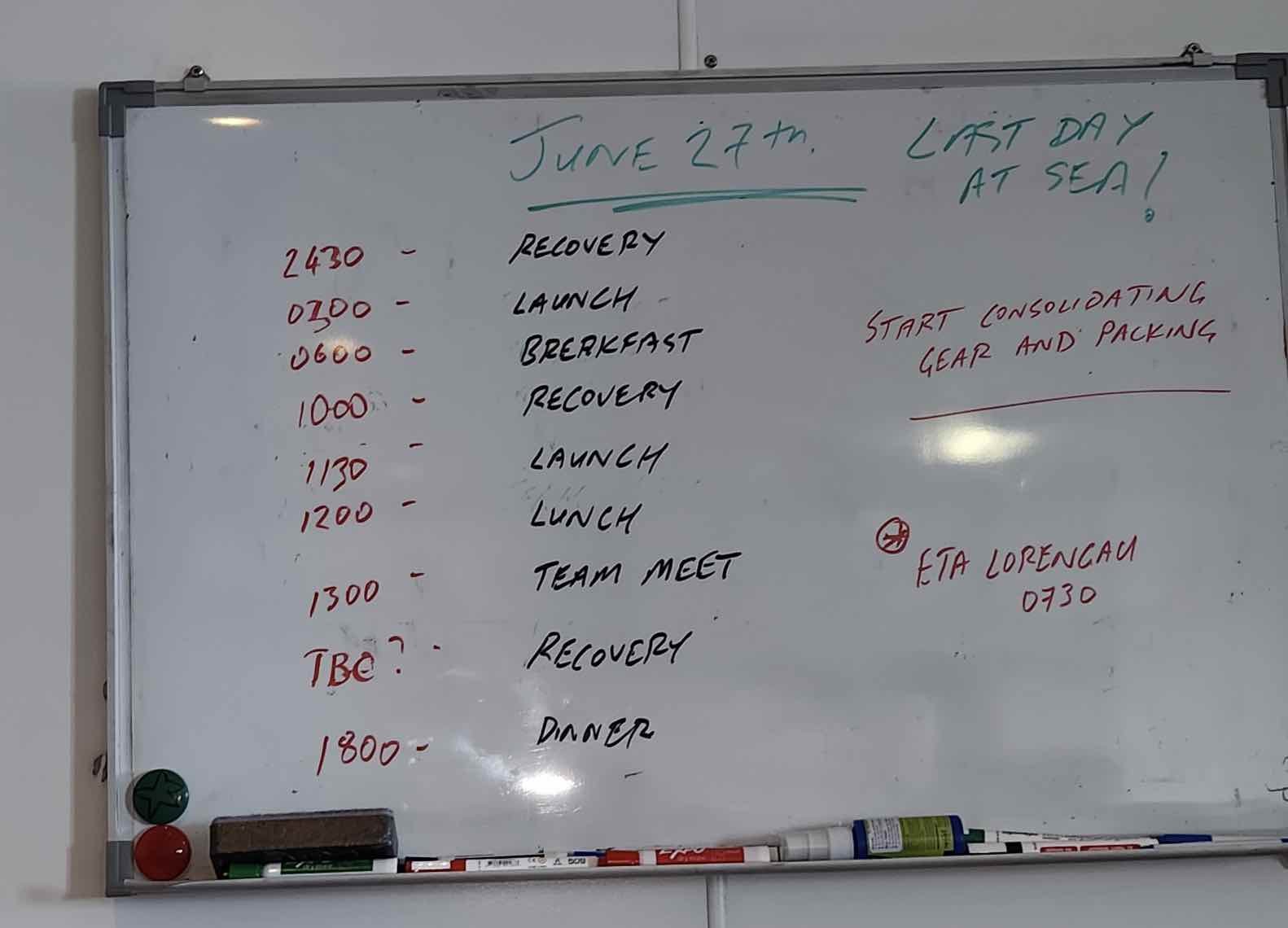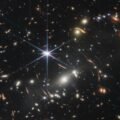This combined 31-33rd installment in an ongoing series of updates from Harvard Astronomer Avi Loeb, head of The Galileo Project, documents the team’s expedition to attempt the recovery of an interstellar object from the floor of the Pacific Ocean. This entry covers Day 15 (June 26, 2023) and Day 16 (June 27, 2023) of the team’s expedition.
Diary of an Interstellar Voyage, Report 31 (June 26, 2023)
By now, we got used to the idea of finding tiny spherules, each measuring a quarter of a millimeter in size. We already have 38 of them. After seeing several of them, my older daughter, Klil, texted me the message: “They are so beautiful! Can I have one on a necklace?”
But finding beauty on the ocean floor was not the goal of the Interstellar Expedition. Instead, the exceptional team members gathered on the deck of the ship Silver Star to figure out the nature of the first recognized interstellar meteor, IM1. Our ability to measure the elements and radioactive isotopes that constituted IM1 before it exploded 18 kilometers above the Pacific Ocean surface depends mainly on the total mass of the sample of relics that we recover from it.
“Our signal-to-noise ratio is all about the total mass and not the number of spherules,” I explained to Rob McCallum at our team meeting today. Admittedly, the 25 milligrams of material we collected so far in 38 spherules is not a lot of mass. It is merely a part of twenty million of the total mass that was entrained in IM1’s fireball on January 8, 2014.


But in Run 15 on June 23, I found a brown magnetic object from the sled, and in Run 19 on June 25, I found another one in the shape of a kidney bean. When I separated the first object from the magnet, I realized that it had the shape of a peanut (or a seashell) width of 0.8 centimeters and a length of 2.5 centimeters. With a mass of 10 grams, it is equivalent to ten thousand spherules, each with a radius of 300 microns and a mass of about a milligram. The iron bean has similar properties.
Since we collected 38 such spherules in about a week, it would have taken us 10 years to collect twenty thousand of them at the same efficiency. And here comes the sled with its delivery of the iron peanut and the iron bean stuck to one of its magnets, allowing us to reach the same signal-to-noise ratio with our gamma-ray spectrometer right now as we would have achieved after collecting sub-millimeter spherules for a decade. When I informed Art Wright about the discovery of the iron peanut and bean, he asked: “Did we just win the lottery twice?”
My take was probably not. Winning the mass budget by four orders of magnitude twice is a very low probability event, and so I was skeptical about the connection of the iron peanut and bean to IM1.
Tonight, we used the X-ray Fluorescence analyzer and measured that the composition of the iron peanut and bean is dominated by iron (85%) and Silicon (10%). It is different from the spherules and could be geological in origin. Surface contamination by the environment is possible, but we plan to conclusively rule out a common origin for the spherules and the iron peanut or iron bean with the sensitive diagnostics available to us once we return to the US.
But the good news is that total mass is not everything. The numerous spherules are important in tracing the trajectory of IM1 and leading us to any large relic left from it on the ocean floor in our next expedition. They resemble the way a trail of blood drops helps us find a wounded cat.
My former postdoc Girish Kulkarni wrote to me: “I am grateful to have people like you in my life, Avi… I have been reading your reports from the Pacific Ocean. Every one of them fills me with enthusiasm and optimism.” Frankly, I derive this optimism from the gifts of mother nature. Among these gifts are the 38 beautiful spherules that we recovered so far. Unfortunately, they are too small to be threaded on a necklace.
Diary of an Interstellar Voyage, Report 32 (June 27, 2023)
The 43 gifts of IM1 spherules from the Pacific Ocean floor are organized in vials like babies in their individual beds within the delivery room of a plastic container (June 27, 2023). The next step is to examine their elemental and isotopic composition in comparison to meteors from the solar system.
This is our last research day on Silver Star before tomorrow’s departure. I will dearly miss the ocean adventure and the expedition team.
But the good news is that we delivered 43 babies over the past two weeks. These spherules are half a millimeter in size and a milligram in mass each. As molten droplets from a fireball, they carry information about the elemental and isotopic composition of the first recognized interstellar meteor, IM1. The association with IM1 was demonstrated by the fact that in our criss-cross survey, the spherules were found primarily along the most likely path of IM1 and not in control regions far away from this path. And most importantly, their locations will guide us to our next expedition to search for large relics left from IM1. Given IM1’s high speed and anomalous material strength, its source must have been a natural environment different from the solar system or an extraterrestrial technological civilization.
In the early hours, just before my jog at sunrise, I had five requests from reporters for comments about the expedition as it reached its conclusion. I made only general comments of the type that appeared in my essays so far but refrained from any quantitative details until further analysis is done.
One of the reporters quoted a scientist saying that IM1 must be a fairly common, rocky meteoroid like known solar system rocks because the US Government data does not agree with known fireball models, and therefore the data must be wrong. The argument misses the point that interstellar objects may have a material composition different from solar system rocks, and given that the US Space Command confirmed the interstellar origin of IM1 at 99.999% confidence – the models used for solar system meteors may not capture the nature of IM1. In other words, the models may, in fact, be wrong rather than the data.
After all, we followed that government trajectory data for IM1 and found spherules along IM1’s reported path. The spherules retrieved will be stored at the Harvard College Observatory. We would not know IM1’s nature until further analysis is done with better diagnostics than we have on Silver Star. Experts on space rocks find it easier to imagine what we already know about the solar system and argue that the government data about IM1 must be wrong than to explore the unknown agnostically. If we do not allow for new things to be discovered, we will never find them. New knowledge is acquired only when old knowledge is regarded incomplete. An expert expressing an opinion about spherules that he had not seen is unprofessional.
I refrained from addressing these comments and told the reporter: “Anyone can say anything they want. We will analyze the materials in our possession with the best instruments in the world and report the results openly. Our first paper will focus on the data. The nature of IM1’s spherules is not a matter of opinion but of facts. Instead of correcting statements made by others, I prefer to focus on collecting those facts and reporting about them in peer-reviewed journals.”
Shortly afterward, a piece about the expedition was published by the BBC.
Aside from the spherules, we recovered anomalous objects, such as a manganese-platinum wire, an iron peanut, an iron bean, as well as corroded iron shards – also retrieved during Run 24 this morning. We will study these anomalous items in great detail.
Altogether, the past two weeks constituted my most thrilling experience during my scientific career. The expedition marks the beginning of a new way of doing astronomy and studying what lies outside the solar system by using microscopes rather than telescopes. We already know that 83% of all matter in the Universe was not witnessed in the solar system. Perhaps there is more to that notion, as implied by the anomalous properties of IM1.
If so, the analysis of IM1’s material in the coming weeks will be a teaching moment for all of us.
Diary of an Interstellar Voyage, Report 33 (June 27, 2023)
We just had a toast of champagne at dinner time on the deck of Silver Star, celebrating the discovery of 50 spherules totaling 35 milligrams near the fireball path of the first recognized interstellar meteor, IM1.


The spherules were found primarily along the most likely path of IM1 and not in control regions far from it. In the coming weeks we will analyze their elemental and isotopic composition and report our data in a paper submitted to a peer-reviewed journal. The interpretation will be left to follow-up papers. Given IM1’s high speed and anomalous material strength, its source must have been a natural environment different from the solar system or an extraterrestrial technological civilization.
By the end of this week, we hope to know more about the elemental and isotopic composition of IM1. In response to the nay-sayers, we say nothing other than show our data in our first publication. One cannot argue with facts, only with interpretations.
There were over a million verified views worldwide of my 33 diary reports over the past couple of weeks. Science can be exciting when it resonates with the passion of the public.


When looking at the beautiful sunset over the horizon in the company of Art Wright, I could not help but wonder whether the treasure is yet to be found at IM1’s location. Finding a large relic of IM1 on the ocean floor based on the spatial distribution of spherules in our 26 runs through the 10 kilometers region around IM1’s fireball will be our common goal for the coming year.
I will miss the breathing noise of Silver Star’s engine as it retrieves the sled with black powder attached to its magnets. At first, we regarded this volcanic ash as background, but within a week, we realized that our signal is embedded in it in the form of metallic marbles of sub-millimeter size and a milligram mass. Back at Harvard, my daughter, Lotem, will use tweezers to separate the abundant population of small spherules of size below 100 microns which we were unable to separate on the rocking ship. By plotting the size distribution of spherules, we can infer whether there is a lower or an upper cutoff to their population.


Run 25 delivered a piece of painted debris which was verified as TiO2 paint, commonly used by humans after 1915. I noted: “Anything produced by humans is of no interest to this expedition.”
Cheers to future interstellar expeditions, including in outer space!
Avi Loeb is the head of the Galileo Project, founding director of Harvard University’s – Black Hole Initiative, director of the Institute for Theory and Computation at the Harvard-Smithsonian Center for Astrophysics, and the former chair of the astronomy department at Harvard University (2011-2020). He chairs the advisory board for the Breakthrough Starshot project and is a former member of the President’s Council of Advisors on Science and Technology and a former chair of the Board on Physics and Astronomy of the National Academies. He is the bestselling author of “Extraterrestrial: The First Sign of Intelligent Life Beyond Earth” and a co-author of the textbook “Life in the Cosmos”, both published in 2021. His new book, titled “Interstellar” is scheduled for publication in August 2023.

